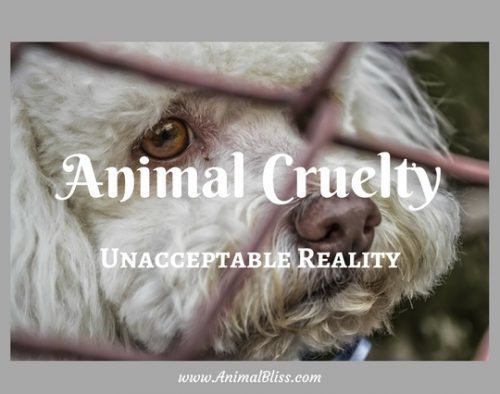As we traverse the landscape of 2025, the question reverberates with increasing urgency: is animal cruelty still occurring, entrenched in the fabric of our global society? This inquiry extends beyond mere facts and figures; it beckons a profound examination of our values, our priorities, and our collective conscience. Despite decades of activism and awareness campaigns, the grim reality is that animal cruelty persists unabated in various forms across the globe.
Animal cruelty is not a monolithic phenomenon; rather, it manifests in myriad ways, each with its own implications. From the agonizing confines of factory farms to the relentless exploitation in entertainment venues, the scope of this issue stretches far and wide. The 2025 landscape is rife with complexities, challenging us to reevaluate our assumptions about cruelty, compassion, and our role in their interplay.
One of the most prevalent forms of animal cruelty remains industrial agriculture, where the desire for efficiency and profit supersedes the ethical treatment of sentient beings. In 2025, factory farming practices still dominate the meat, dairy, and egg industries. These facilities, often shrouded in secrecy, prioritize productivity over welfare. Animals are confined in cramped quarters, routinely subjected to inhumane conditions that stifle their natural behaviors. The promise of humane treatment, though frequently touted by some corporations, remains an illusion for the vast majority. The juxtaposition between consumer demand for cheap animal products and the ethical obligations we hold toward these animals creates a disturbing dichotomy, one that requires urgent attention and reevaluation.
Beyond the realms of agriculture, the entertainment industry continues to exploit animals for profit. Circuses, aquariums, and zoos often depict a façade of responsible stewardship, yet the harsh reality is that many animals endure physical and psychological torment. Their existence becomes a spectacle, reduced to mere elements of entertainment. In 2025, movements advocating for the abolition of animal performances are gaining momentum, urging society to reconsider the morality of exploiting these beings for amusement. Yet, as the glitzy lights of circuses dim, the ongoing exploitation of animals speaks to a larger societal reluctance to confront uncomfortable truths.
Moreover, global wildlife trafficking proliferates, driven by insatiable demand for exotic pets, traditional medicine, and luxury goods. This heinous activity not only jeopardizes animal populations but also destabilizes ecosystems. The horrors of poaching and illegal trade continue to pervade the consciousness of the wild, showcasing humanity’s capacity for greed and cruelty. By 2025, conservation groups and international entities strive valiantly to combat this crisis, yet challenges abound. The connective tissue of organized crime and corruption complicates the fight, necessitating a multilateral approach that spans borders and encompasses education, policy, and community engagement.
However, amid this darkness, rays of hope persist. Activism has burgeoned, with millions rallying for animal rights, leveraging social media to amplify their voices. Public awareness is at an all-time high, spearheaded by documentaries, viral posts, and grassroots campaigns. The concept of ethical consumerism is gaining traction. People are increasingly demanding transparency and accountability from companies. As consciousness shifts, the potential for legislative reform grows. In several jurisdictions, laws aimed at safeguarding animals are becoming more comprehensive and stringent, reflecting a societal shift toward greater recognition of their rights.
But the question remains: is awareness enough? The answer lies in a collective commitment to change. It requires a willingness to scrutinize our own behaviors and habits. Reducing meat consumption, supporting cruelty-free products, and advocating for the adoption of pets rather than purchasing from breeders make tangible contributions to combatting cruelty. The significance of our choices cannot be overstated; they reverberate across industries and can help dismantle cruel systems.
Furthermore, education plays a pivotal role in shaping the future. Initiatives aimed at teaching empathy and compassion towards all beings, starting from childhood, are imperative. In 2025, educational institutions that incorporate animal rights into their curricula are fostering a generation more attuned to the complexities of interspecies relationships. By instilling values that emphasize respect for all living things, society can begin to sow the seeds of change that will flourish in years to come.
Moreover, it is essential to recognize the role that technology plays in the fight against animal cruelty. From advancements in surveillance that monitor illegal activities to innovative alternatives in food production, technological disruption is creating potential pathways for change. In the face of inhumane practices, we must be willing to explore and invest in these emerging solutions, ensuring that we harness technology in service of compassion rather than cruelty.
In conclusion, the fight against animal cruelty in 2025 reveals a complex tapestry interwoven with both hope and despair. While the shadows of antiquated practices and exploitation loom large, a collective consciousness is waking. It is incumbent upon us to champion the cause of our voiceless counterparts, advocating not only for their rights but also for a fundamental shift in perspective towards a more compassionate world. The journey will undoubtedly be fraught with challenges; however, the potential for transformation exists in the choices we make and the values we choose to uphold. As we forge ahead, let us remain vigilant, relentlessly pursuing the eradication of animal cruelty and the cultivation of a more empathetic society.








